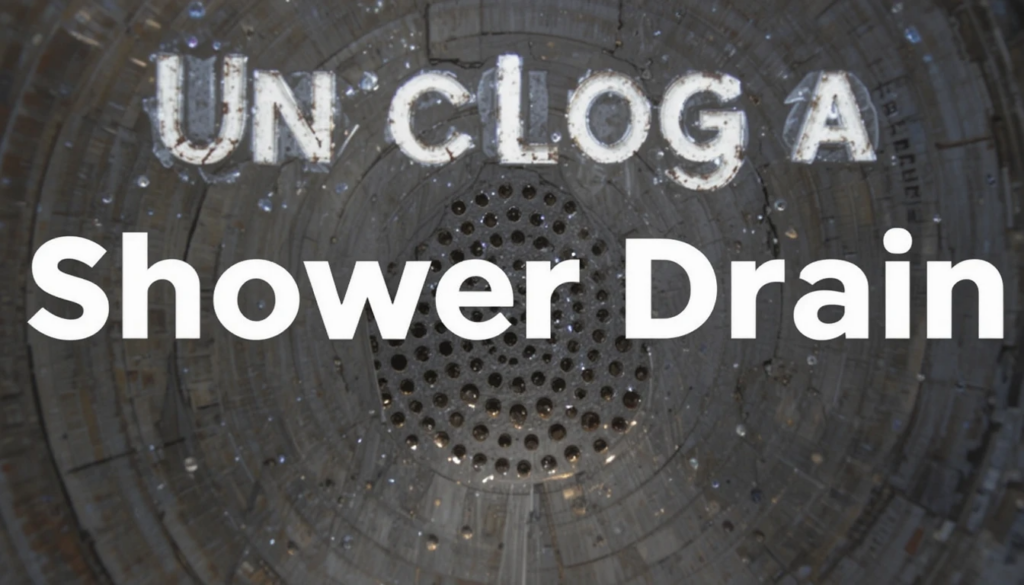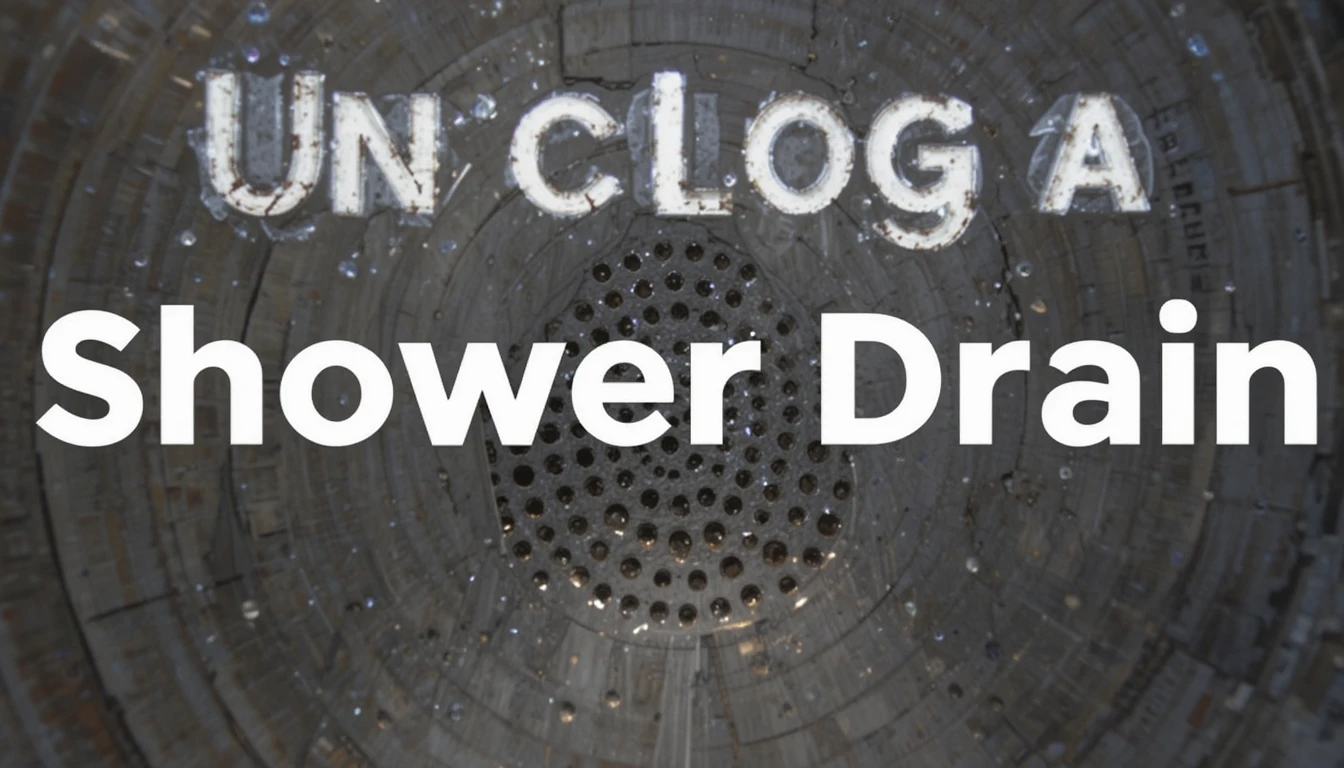How to Unblock Shower Drains Safely and Effectively

Blocked shower drains are a common household issue that can lead to more serious plumbing problems if not addressed promptly. In Tweed Heads, where various factors can contribute to drain clogs, knowing how to safely and effectively unblock your shower drain is an essential skill for homeowners. This comprehensive guide will walk you through several methods to clear your shower drain, from simple DIY solutions to more advanced techniques.
How to Safely and Effectively Unblock Shower Drains
Video
Methods to Unblock Shower Drains
Is your shower drain clogged? Here are quick, effective methods to unblock it:
-
Plunger: Create a seal and plunge vigorously for 20-30 seconds.
-
Baking Soda & Vinegar: Pour 1/2 cup baking soda, then 1/2 cup vinegar. Wait 15 minutes, flush with hot water.
-
Drain Snake: Insert a drain snake or wire hanger, twist to catch debris, pull out.
-
Boiling Water: Carefully pour boiling water directly into the drain.
-
Clean Drain Cover: Remove cover, clean out visible hair and debris.
If these don’t work, call a professional plumber. For immediate help in Tweed Heads, contact Plumbers Tweed Heads at [insert phone number].
Detailed Guide to Unblocking Your Shower Drain
1. Plunger Method
-
Remove standing water from the shower.
-
Cover the overflow plate with a wet cloth.
-
Place the plunger over the drain, ensuring a tight seal.
-
Plunge vigorously for 20-30 seconds.
-
Check if water drains. Repeat if necessary.
2. Baking Soda and Vinegar Technique
-
Remove standing water.
-
Pour 1/2 cup baking soda down the drain.
-
Follow with 1/2 cup white vinegar.
-
Cover the drain with a plug or cloth.
-
Wait 15 minutes.
-
Flush with hot water.
3. Using a Drain Snake
-
Remove the drain cover.
-
Insert the snake into the drain.
-
Turn the handle to extend the snake until you feel resistance.
-
Rotate the snake to break up or grab the clog.
-
Pull the snake out, removing debris.
-
Run hot water to clear remaining debris.
4. Boiling Water Flush
-
Boil a full kettle of water.
-
Carefully pour the boiling water directly into the drain in three stages.
-
Allow a few minutes between each pour.
-
Check if the drain clears.
Caution: Avoid this method with PVC pipes as it can cause damage.
5. Removing and Cleaning the Drain Cover
-
Unscrew or pry off the drain cover.
-
Remove visible hair and debris by hand (wear gloves).
-
Clean the cover thoroughly.
-
Replace the cover.
Preventive Measures
-
Install a drain cover to catch hair and debris.
-
Clean the drain weekly with hot water flush.
-
Use a mixture of baking soda and vinegar monthly.
-
Avoid letting excess soap, hair, or bath products go down the drain.
When to Call a Professional
Call a plumber if:
-
These methods don’t work
-
You notice persistent bad odors
-
Multiple drains are clogged
-
You hear gurgling sounds from the drain
-
There’s water backing up in other fixtures
Best Removal Methods:
Use baking soda and vinegar or a drain snake specifically designed for hair removal.
Remember, regular maintenance prevents most clogs. If you’re unsure or uncomfortable with DIY methods, it’s always best to consult a professional plumber to avoid damaging your plumbing system.
| Tool | Description | Pros | Cons | Best For |
|---|---|---|---|---|
| Plunger | Creates pressure to dislodge blockages | Inexpensive, easy to use | Can be messy, may not work for deep clogs | Minor clogs in sinks and bathtubs |
| Drain Snake | Flexible tool that breaks up clogs | Effective for deeper clogs | Can be difficult to maneuver | Clogged shower drains |
| Zip-It Tool | Designed to remove hair and debris | Simple to use, inexpensive | Limited to hair-related clogs | Hair blockages in shower drains |
| Chemical Cleaners | Harsh chemicals that dissolve clogs | Quick solution for stubborn blockages | Can damage pipes, harsh on the environment | Last resort for tough clogs |
| Drain Cleaning Brush | Pulls out hair and particles from drains | Good for routine maintenance | Requires manual effort | Regular cleaning of shower drains |
Common Causes of Blocked Shower Drains
Understanding the typical causes of blocked shower drains can help you prevent future issues:
-
Hair Accumulation: Hair is one of the leading causes of clogs in shower drains.
-
Soap Scum Buildup: Soap residue can combine with hair and other debris, creating blockages.
-
Hard Water Deposits: Mineral buildup from hard water can restrict water flow.
-
Small Objects: Items like shampoo caps or soap pieces can accidentally get washed down the drain.
-
Tree Root Intrusion: In severe cases, roots from nearby trees can invade sewer lines.
Importance of Addressing the Issue Promptly
Ignoring a blocked shower drain can lead to:
-
Water damage in your bathroom
-
Unpleasant odors
-
Increased pressure in your plumbing system
-
More costly repairs down the line
Safety Precautions
Before attempting any drain cleaning method, prioritize safety:
-
Protective Gear: Wear rubber gloves and safety goggles to protect yourself from bacteria and splashes.
-
Ventilation: Ensure proper ventilation in the area, especially when using chemical cleaners.
-
Chemical Caution: Never mix different chemical cleaners, as this can produce dangerous fumes.
Hard Water Deposits
In areas with hard water, limescale can build up in pipes:
Identifying Limescale Buildup:
Look for white chalky deposits around faucets or inside pipes.
Specialized Cleaning Solutions:
Use vinegar or specialized descaling products designed to dissolve mineral deposits safely.
Maintenance Tips to Prevent Future Blockages
Regular maintenance can prevent most shower drain blockages:
-
Regular Cleaning Routines: Clean your shower drains weekly by removing hair and debris.
-
Installing Drain Covers: Use mesh covers that catch hair while allowing water through easily.
-
Proper Disposal of Bath Products: Avoid letting large amounts of soap or shampoo go down the drain at once.
When to Call a Professional Plumber
While many shower drain blockages can be resolved with DIY methods, some situations require professional help:
-
Signs of Severe Blockages: If multiple drains are clogged simultaneously or if there are persistent slow drainage issues.
-
Recurring Drain Issues: If you find yourself frequently dealing with clogs despite regular maintenance efforts.
-
Complex Plumbing Systems: If your home has an intricate plumbing setup that requires specialized tools or knowledge.
Conclusion How to Unclog a Shower Drain Without Tools
Maintaining a clear shower drain is crucial for your bathroom’s proper functioning. By utilizing these safe and effective methods, homeowners in Tweed Heads can keep their shower drains flowing freely while minimizing potential plumbing issues down the line. Regular maintenance is key; however, if you’re ever unsure about tackling a blockage yourself, don’t hesitate to contact a professional plumber for assistance. https://plumberstweedheads.au
